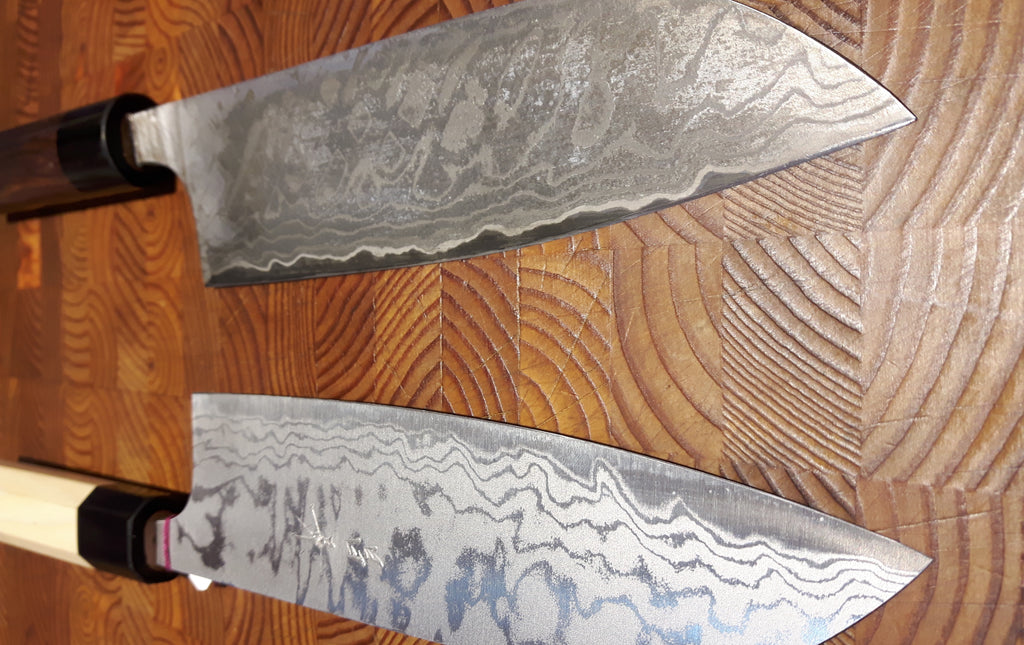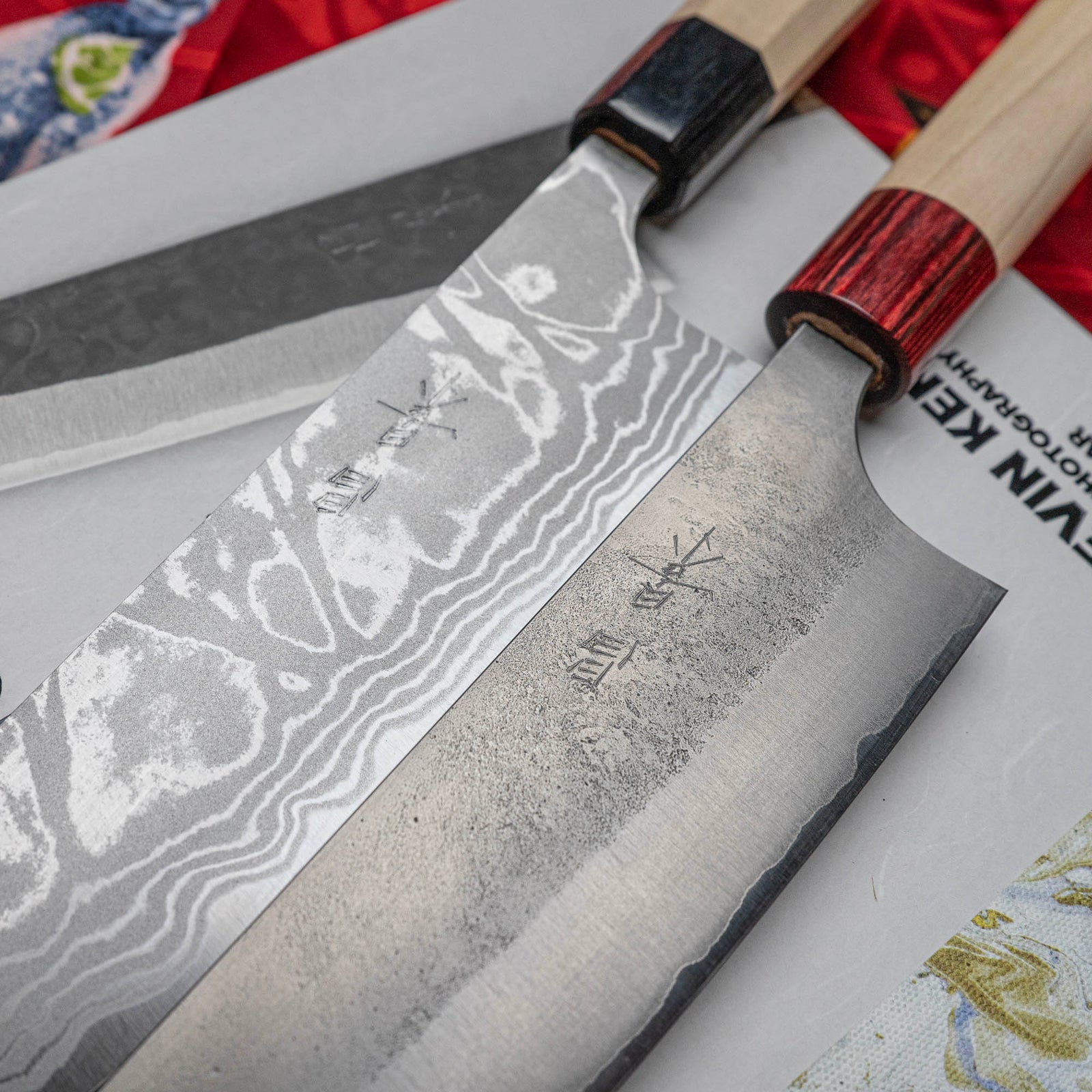Free shipping on orders over $100 - Excluding konro grills
Free shipping on orders over $100 - Excluding konro grills
Japanese Knives
Sharpening
Accessories
How Can I Stop My Carbon Steel Knife From Rusting?
September 16, 2021 3 min read

Carbon steel knives can be a beautiful pain in the ass sometimes. They are usually sharper than stainless knives, a dream to sharpen, and have amazing edge retention. Unfortunately, they can also rust if not given a little extra care.
After a while, the steel will oxidize and react with moisture and air and start to change colour. Your knife will take on hues of grey, blue and black; this is a good thing. It's called a patina, and you can think of it as a little extra help in the war on rust. If your knife starts turning yellow, red, or orange, you've got a rusty knife and you'll want to clean it as soon as possible.
Besides washing and drying your knife right after use, one easy way to avoid rust is to pick up some blade oil and apply it to your knife regularly. This will stave off ambient moisture in the air when the knife is in storage, although it doesn't make the knife less reactive when you use it to cut acidic food.
Lucky for you, I've figured out a pretty easy way to force an early patina onto a carbon steel and prevent it from rusting.
Disclaimer: forcing a patina in this way can permenantly alter the look of your knife, including the finish. If you love the way your knife looks now, I suggest letting the patina form naturally.
How to Force a Patina on Your Carbon Steel Knife
What you’ll need:
- Cheap, pre-ground instant coffee (Folgers, Nescafe, Cheap cheap store brands). The cheaper the better, think of the coffee you'd get at 3:30 AM in a Gas Station.
- A means to brew the awful coffee.
- A tall and slender vessel, like a flower vase. Double stacked XL To-Go Coffee cups work as well.
- Your carbon steel knife
- A small sponge/dish cloth
Step 1: Brew that coffee!
Brew a STRONG pot of coffee, so strong that you’d be jittery for days! Now chill it. You want the coffee to be cold for this process, we aren’t making a knife & coffee soup.
Step 2: Find a vessel for your knife
- Using your tall, skinny vessel, place the small sponge or dish cloth in the bottom. Put your knife in gently, tip down.
- Pour in the chilled coffee until it covers the entire blade of your knife, but does NOT submerge the handle.
- Leave the knife in the solution for 6-8 hours minimum. Overnight is ideal. A full 24hr will create the most striking effect.

Step 3: Emergence
After 6-24 hours have passed, remove the knife from the coffee, wipe it down with a damp cloth, and dry it thoroughly. Your knife has undergone an incredible transformation and is now a lot easier to maintain. It’s going to be a lot more rust resistant than before, but continue to wipe that blade after you use it, and keep it clean and dry.
Step 4: Hone and strop that knife!
Coffee forced patinas aren’t nearly as acidic as lemon or vinegar patinas, but the acid in the coffee will have reduced some of the polish on your cutting edge. Plus, you should always hone and strop before the last (optional) step!

Step 5 (Optional but suggested):
You want to get that coffee smell off the steel, so I recommend cutting up some yellow onions to pull out the coffee fragrance. Then fry those onions. Coffee fried onions will be the star of the show in your next sandwhich or pot of chili!
Pretty cool, huh? This process produces spectacular results on Shirogami #1 or #2 steels. It also does wonders on Kurouchi finished knives as well as Aogami steels, although it can discolour the kurouchi finish. The results are less striking but just as functional. My Moritaka 210mm Kiritsuke is almost jet black!

Subscribe
Sign up to get the latest on sales, new releases and more …




















